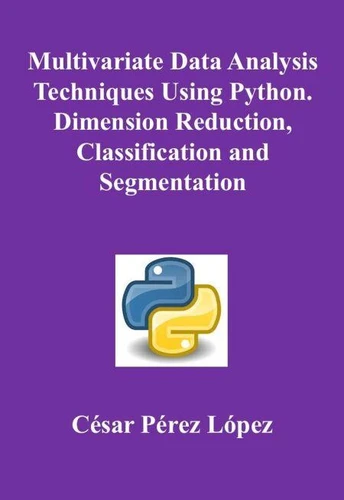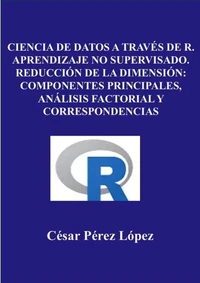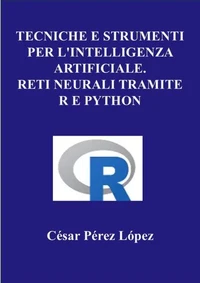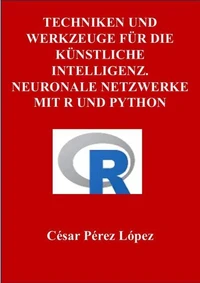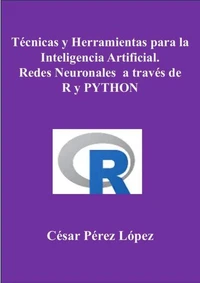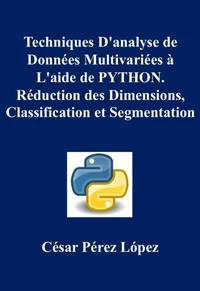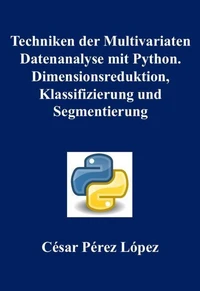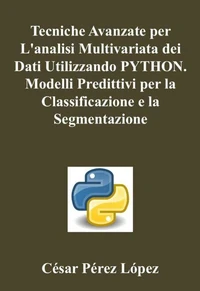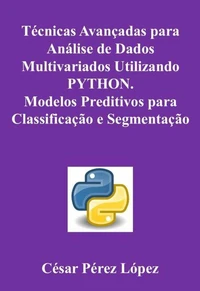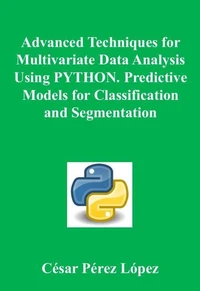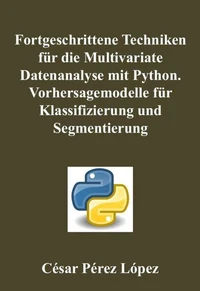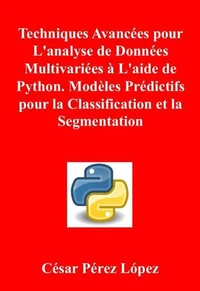Nouveauté
Multivariate Data Analysis Techniques Using Python. Dimension Reduction, Classification and Segmentation
Par :Formats :
Disponible dans votre compte client Decitre ou Furet du Nord dès validation de votre commande. Le format ePub est :
- Compatible avec une lecture sur My Vivlio (smartphone, tablette, ordinateur)
- Compatible avec une lecture sur liseuses Vivlio
- Pour les liseuses autres que Vivlio, vous devez utiliser le logiciel Adobe Digital Edition. Non compatible avec la lecture sur les liseuses Kindle, Remarkable et Sony
 , qui est-ce ?
, qui est-ce ?Notre partenaire de plateforme de lecture numérique où vous retrouverez l'ensemble de vos ebooks gratuitement
Pour en savoir plus sur nos ebooks, consultez notre aide en ligne ici
- FormatePub
- ISBN8231440146
- EAN9798231440146
- Date de parution11/07/2025
- Protection num.pas de protection
- Infos supplémentairesepub
- ÉditeurWalzone Press
Résumé
When faced with the reality of a study, the researcher typically has many variables measured or observed in a collection of individuals. They intend to study them together and turn to Multivariate Analysis. They are faced with a variety of techniques and must select the most appropriate one for their data, but above all, for their scientific objective. When observing many variables in a sample, it is likely that some of the information collected may be redundant, in which case multivariate dimension reduction methods (methods that combine observed variables to obtain a few fictitious variables that represent them) attempt to eliminate it.
On the other hand, individuals may present certain common characteristics in their responses, which allow for an attempt to classify them into groups of a certain homogeneity (analyzing the relationships between variables to see if individuals can be separated into groups a posteriori). Finally, there may be a variable whose dependence on a set of others is interesting to detect in order to analyze its relationship or even to venture a prediction when the others are known.
This book explores dimension reduction techniques (Principal Components, Factor Analysis, Correspondence Analysis, and Multidimensional Scaling). It also delves into Discriminant Analysis and its applications for classification and segmentation.
On the other hand, individuals may present certain common characteristics in their responses, which allow for an attempt to classify them into groups of a certain homogeneity (analyzing the relationships between variables to see if individuals can be separated into groups a posteriori). Finally, there may be a variable whose dependence on a set of others is interesting to detect in order to analyze its relationship or even to venture a prediction when the others are known.
This book explores dimension reduction techniques (Principal Components, Factor Analysis, Correspondence Analysis, and Multidimensional Scaling). It also delves into Discriminant Analysis and its applications for classification and segmentation.
When faced with the reality of a study, the researcher typically has many variables measured or observed in a collection of individuals. They intend to study them together and turn to Multivariate Analysis. They are faced with a variety of techniques and must select the most appropriate one for their data, but above all, for their scientific objective. When observing many variables in a sample, it is likely that some of the information collected may be redundant, in which case multivariate dimension reduction methods (methods that combine observed variables to obtain a few fictitious variables that represent them) attempt to eliminate it.
On the other hand, individuals may present certain common characteristics in their responses, which allow for an attempt to classify them into groups of a certain homogeneity (analyzing the relationships between variables to see if individuals can be separated into groups a posteriori). Finally, there may be a variable whose dependence on a set of others is interesting to detect in order to analyze its relationship or even to venture a prediction when the others are known.
This book explores dimension reduction techniques (Principal Components, Factor Analysis, Correspondence Analysis, and Multidimensional Scaling). It also delves into Discriminant Analysis and its applications for classification and segmentation.
On the other hand, individuals may present certain common characteristics in their responses, which allow for an attempt to classify them into groups of a certain homogeneity (analyzing the relationships between variables to see if individuals can be separated into groups a posteriori). Finally, there may be a variable whose dependence on a set of others is interesting to detect in order to analyze its relationship or even to venture a prediction when the others are known.
This book explores dimension reduction techniques (Principal Components, Factor Analysis, Correspondence Analysis, and Multidimensional Scaling). It also delves into Discriminant Analysis and its applications for classification and segmentation.

